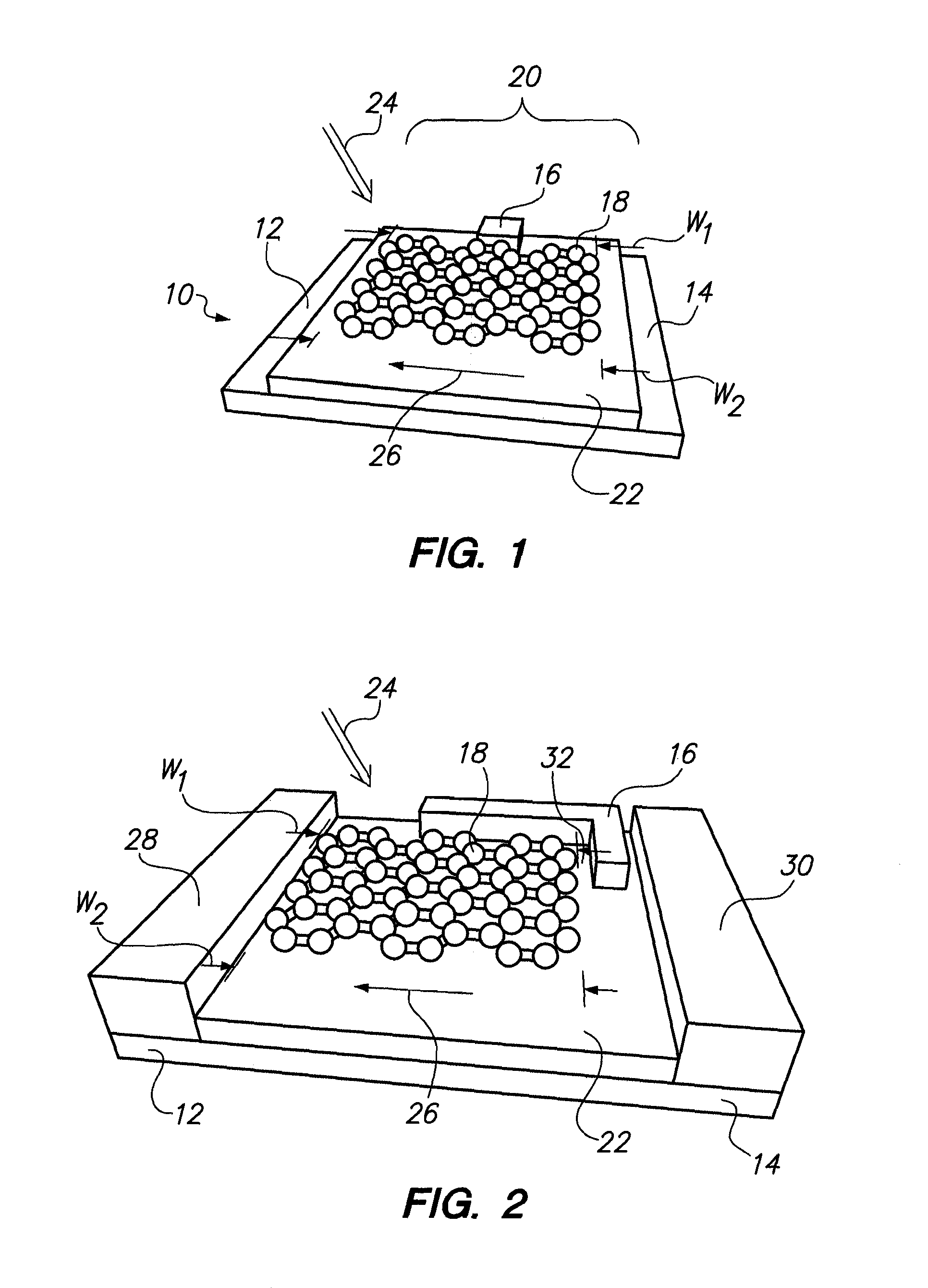Graphene based quantum detector device
a quantum detector and graphene technology, applied in semiconductor devices, solid-state devices, electrical devices, etc., can solve the problems of inability to address current technology, intrinsic limit of operation to high frequencies of semiconductors and superconductors, and similar reduction in antenna size for lower frequencies operation, etc., to facilitate electron funneling, reduce the effect of profile and operation effectively over a much wider frequency rang
- Summary
- Abstract
- Description
- Claims
- Application Information
AI Technical Summary
Benefits of technology
Problems solved by technology
Method used
Image
Examples
Embodiment Construction
[0014]Referring initially to FIG. 1, a graphene based quantum detector device is shown and is initially designated by reference character 10. As shown, device 10 can be configured in the same manner as a transistor, to include a source 12, a drain 14 and a discharging element 16. A graphene sheet 18 can be included in the device according to several embodiments. Graphene sheet 18 can cooperate with discharging element 16 to function as a gate 20 for the device 10. An insulator layer 22 can separate graphene sheet 18 from source 12 and drain 14.
[0015]The material properties of graphene can allow the structure disclosed herein to function as a transistor using the quantum nature of light. Specifically, due to the zero-bandgap nature of graphene, it can be capable of generating conduction electrons from incident electromagnetic radiation over a wide range of frequencies. As a result, an incident photon will push an electron into the conduction band to create an electron-hole pair. When...
PUM
 Login to View More
Login to View More Abstract
Description
Claims
Application Information
 Login to View More
Login to View More - R&D
- Intellectual Property
- Life Sciences
- Materials
- Tech Scout
- Unparalleled Data Quality
- Higher Quality Content
- 60% Fewer Hallucinations
Browse by: Latest US Patents, China's latest patents, Technical Efficacy Thesaurus, Application Domain, Technology Topic, Popular Technical Reports.
© 2025 PatSnap. All rights reserved.Legal|Privacy policy|Modern Slavery Act Transparency Statement|Sitemap|About US| Contact US: help@patsnap.com



